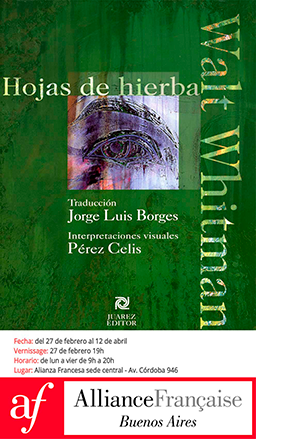MAGIC LIGHTS, BOILING SURFACES - REBECA CARAPIÁ, PIPILOTTI RIST AND RIVANE NEUENSCHWANDER
Organic iron shapes glide through the waters of a lake that has an Edenic feel to it, in a mix of drawing, sculpture and environment with large and challenging scales. An immersive video installation in which the artist creates a sexy and ecological work using technology. A solo exhibition in which the strong political ebullience of our times is not manifested in works similar to leaflets and prescriptions that are already so widely disseminated, but rather in a subtle poetics that does not seek simplistic results. This is how Inhotim is presenting three new projects at the end of 2024, in which the protagonists are Rebeca Carapiá, Pipilotti Rist and Rivane Neuenschwander. Three very different strategies by names of different visibilities and generations, which help to forge a moment in the institution that seems more connected to the fascinating and special nature of the place, without leaving aside lively questions about the strange days we are living through.
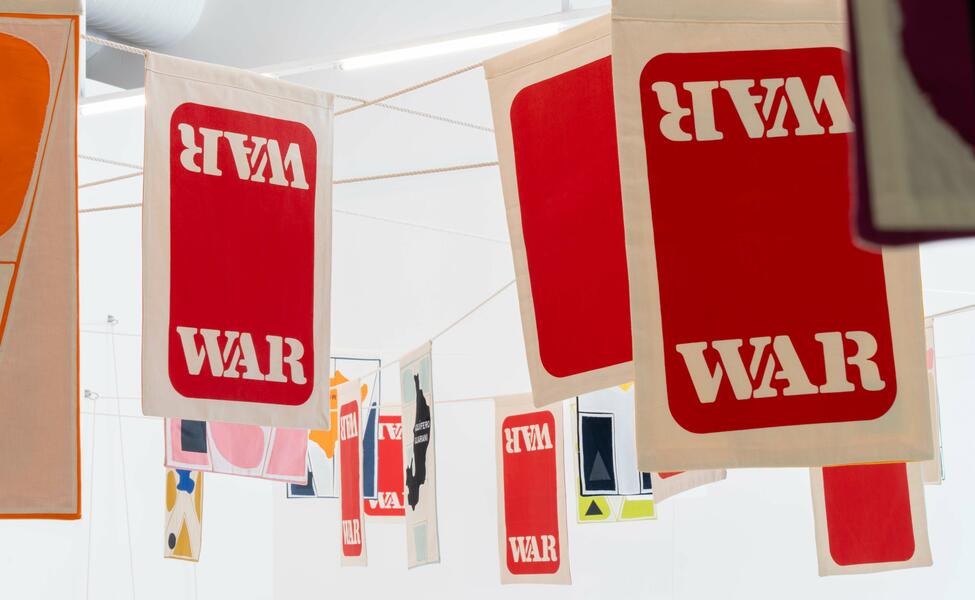
Apenas Depois da Chuva (Only After the Rain) attests to Rebeca Carapiá's fruitful moment, with large-scale three-dimensionals exhibited in traditional shows such as the Panorama of Brazilian Art at MAM-SP (until January 26), and this project specifically commissioned by the Minas Gerais arts center, with no completion date. Carapiá is also now represented by the Millan gallery, one of the big players in the Brazilian market, –which has the medallion artist Tunga (1952-2016) on its list– precisely with a lake-surrounding pavilion entitled True Rouge, a striking piece from 1997.
Carapiá germinated the project from two research trips, one to Maranhão and the other to Piauí, both in the northeast of the country. In this last region, the cave paintings in the Serra da Capivara National Park, which may date back 6,000 to 12,000 years, provided a rich source for the numerous sketchbooks and drawings that underpin the artist's three-dimensional research. The monumentality of the natural park also instigated the production.
The particular location and Inhotim's metalwork team were also important elements in the design of the 20 metal pieces, each about 5 meters long, which glide as if they were extremely tenuous over the water surface. In this unique weave of heaviness and lightness, opacity and transparency, presence and absence, an immense fragmented and mobile sculpture is drawn, so well surrounded by the exuberant green of the botanical garden and the vibrant scarlet of True Rouge.
-
Rebeca Carapiá, Apenas depois da chuva (2024)
CRÉDITO: Ícaro Moreno
-
Rebeca Carapiá, Apenas depois da chuva (2024)
CRÉDITO: Ícaro Moreno
-
Rebeca Carapiá, Apenas depois da chuva (2024)
CRÉDITO: Ícaro Moreno
-
Rebeca Carapiá, Apenas depois da chuva (2024)
CRÉDITO: Ícaro Moreno
-
Rebeca Carapiá, Apenas depois da chuva (2024)
CRÉDITO: Ícaro Moreno
The seductive chromaticism of Inhotim did not go unnoticed by the cameras of Swiss artist Pipilotti Rist, who finally has a significant work, Homo sapiens sapiens, shown in the contemporary Brazilian museum. Nearly 20 years before, she was shown at the San Stae church, as part of the 51st Venice Biennale, an edition led by Spaniards María de Corral and Rosa Martínez in 2005.
As one of the great names in video art worldwide, Rist has created an iconic work within her peculiar visual grammar, a synesthetic piece in which images, sounds and ambience give visitors the possibility of a unique and breathtaking journey. The public, sprawled out on multicolored, comfortable cushions, rugs and floors, is invited to watch the video projection on the pavilion's ceiling. “I try, in my art, to pay tribute to the wonder of life,” said the artist in 2009, when she had a solo show in São Paulo at two museums, the Paço das Artes and the Museum of Image and Sound. “I like to use the pattern in a slightly more transcendental way, using it as a magical light.”
It must really be from a magical field that Rist, using technology far inferior to today's, skillfully and inventively constructs an audiovisual delirium, starring Pepperminta (Ewelina Guzik), his traditional heroine. The fragmented (anti)narrative takes us through a post-psychedelic universe in which skin, fluids, fruit, twigs and minimal landscapes, among many other elements, amalgamate into a single piece.
In a pavilion next to Carapiá and Rist, Rivane Neuenschwander is showing Tangolomango, a kind of offshoot of O Fardo, A Farda, A Fresta, completed at the Fortes D'Aloia e Gabriel gallery last February. One of Brazil's leading artists, Rivane, born in the local Belo Horizonte, already has a permanent work at the museum, Continente/Nuvem (2007-08).
The show brings together installations, films, drawings, three-dimensionals and paintings from the 2000s to the present, including the re-assembly of Allegory of Fear (2018-24), previously presented in Rio de Janeiro, Bogotá and London. Like a large playground based on the artist's research into childhood fears, it is linked to other works in which fears of the Brazilian authoritarian period (1964-1985) make explicit the trauma caused in the nation by the 'years of lead'.
In addition to Allegory... , displayed centrally in the gallery, there are poignant works, but nothing appealing or literal. In this sense, Cabra-Cega (2016), a video installation based on children's testimonies about their greatest afflictions, JB (Piracema: Uma Transa Pós-Amazônica), from 2023, a kind of phantasmagorical journey based on pro-regime advertising in the 1970s, and História e Infância (History and Childhood) (WAR), from 2017, an installation that literally plays with geopolitical relations that are usually not fair to the global South.
Thus, with three projects of very different scopes and materialities, Inhotim is deepening conceptual and visual programs that are more closely intertwined with the robust nature of their surroundings, without neglecting critical questions about such effervescent and conflictive days.
Rebeca Carapiá - Apenas Depois da Chuva; Pipilotti Rist - Homo sapiens sapiens; Rivane Neuenschwander - Tangolomango
From October 19th, 2024
Inhotim - Rua B, 20, Brumadinho, MG, Brazil.
Related Topics
May interest you
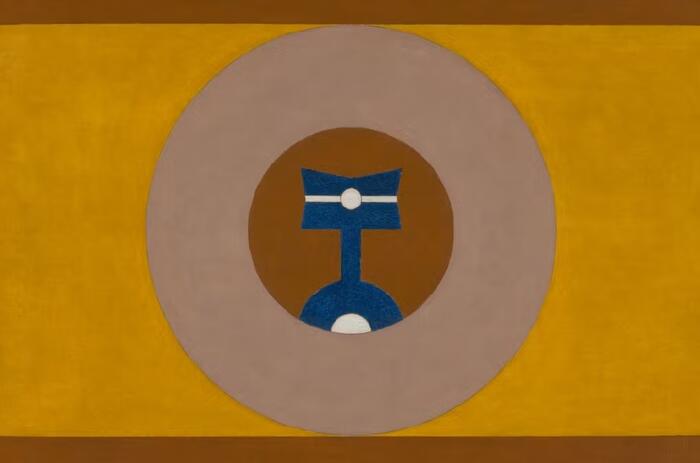
ICA Miami presents the first US museum exhibition of the late Afro-Brazilian painter Rubem Valentim (b. 1922, Salvador, Brazil; d. 1991, São Paulo). A singular voice in modernist painting and geometric abstraction, Valentim explored the medium’s formal concerns and social resonances across cultures and spiritual practices. This exhibition focuses on works Valentim produced in the 1960s, and the transformation of his work and thinking during this time.
RUBEM VALENTIM AT ICA MIAMI: THINKING AND TRANSFORMATION
ICA Miami presents the first US museum exhibition of the late Afro-Brazilian painter Rubem Valentim (b. 1922, Salvador, Brazil; d. 1991, São Paulo). A singular voice in modernist painting and geometric abstraction, Valentim explored the medium’s formal concerns and social resonances across cultures and spiritual practices. This exhibition focuses on works Valentim produced in the 1960s, and the transformation of his work and thinking during this time.

ICA Miami presents the first US museum exhibition of the late Afro-Brazilian painter Rubem Valentim (b. 1922, Salvador, Brazil; d. 1991, São Paulo). A singular voice in modernist painting and geometric abstraction, Valentim explored the medium’s formal concerns and social resonances across cultures and spiritual practices. This exhibition focuses on works Valentim produced in the 1960s, and the transformation of his work and thinking during this time.
RUBEM VALENTIM AT ICA MIAMI: THINKING AND TRANSFORMATION
ICA Miami presents the first US museum exhibition of the late Afro-Brazilian painter Rubem Valentim (b. 1922, Salvador, Brazil; d. 1991, São Paulo). A singular voice in modernist painting and geometric abstraction, Valentim explored the medium’s formal concerns and social resonances across cultures and spiritual practices. This exhibition focuses on works Valentim produced in the 1960s, and the transformation of his work and thinking during this time.
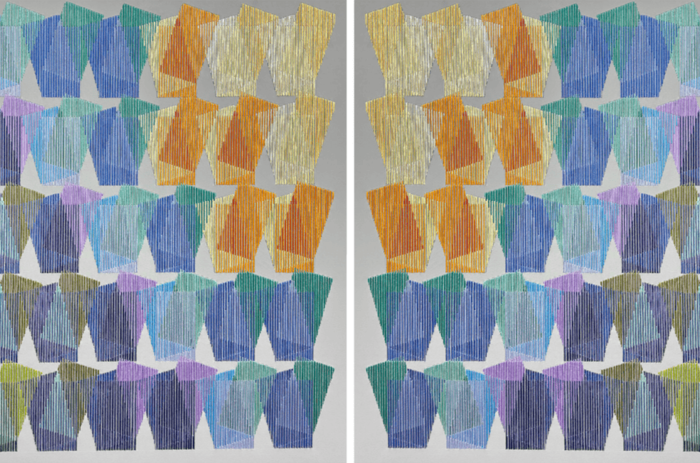
Isabella Despujols (Barquisemeto, Venezuela, 1994), Venezuelan artist based in Brazil, uses her artistic references for the realization of her latest series of works, a set made this year where textiles and embroidery are especially relevant, as well as the formal fact that they reflect. In them is palpable the conversation that he intends to maintain with those styles and languages that were fundamental in the countries to which he circumscribes his personal experience.
DESPUJOLS' EMBROIDERED GEOMETRY AT LLAMAZARES
Isabella Despujols (Barquisemeto, Venezuela, 1994), Venezuelan artist based in Brazil, uses her artistic references for the realization of her latest series of works, a set made this year where textiles and embroidery are especially relevant, as well as the formal fact that they reflect. In them is palpable the conversation that he intends to maintain with those styles and languages that were fundamental in the countries to which he circumscribes his personal experience.
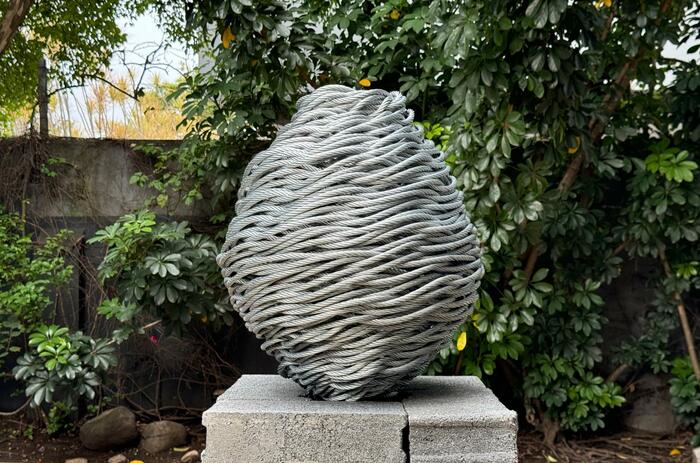
The Brazilian gallery Vermelho inaugurated Elemental Change, Ximena Garrido-Lecca's first solo exhibition in the space.
XIMENA GARRIDO-LECCA AT VERMELHO - A NEW VISION OF THE SYSTEM
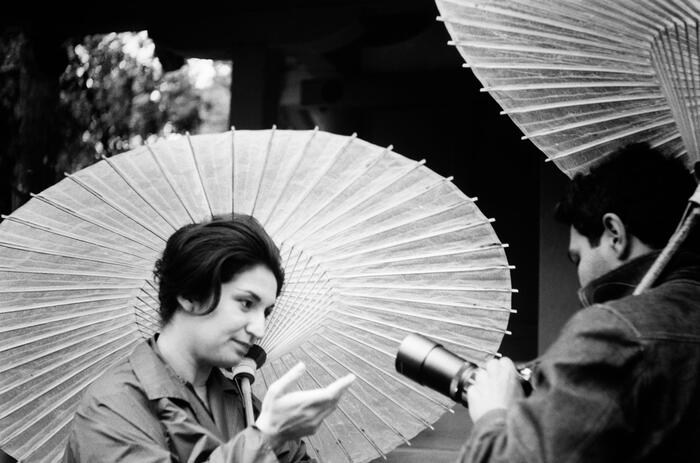
The approach and review of the work that the multidisciplinary Portuguese-Brazilian artist Fernando Lemos (Lisbon, Portugal, 1926 - São Paulo, Brazil, 2019) made in the framework of his relationship with Japan is the reason for the exhibitions that two centers of the Calouste Gulbenkian Foundation dedicate to his figure. It is worth remembering here that both of them transit in the Japanese concept that stands as the central axis of the new headquarters of the Centro de Arte Moderno, recently inaugurated, and on which the dialogue between both curatorial proposals pivots.
FERNANDO LEMOS AND JAPAN REVIEWED AT GULBENKIAN
The approach and review of the work that the multidisciplinary Portuguese-Brazilian artist Fernando Lemos (Lisbon, Portugal, 1926 - São Paulo, Brazil, 2019) made in the framework of his relationship with Japan is the reason for the exhibitions that two centers of the Calouste Gulbenkian Foundation dedicate to his figure. It is worth remembering here that both of them transit in the Japanese concept that stands as the central axis of the new headquarters of the Centro de Arte Moderno, recently inaugurated, and on which the dialogue between both curatorial proposals pivots.
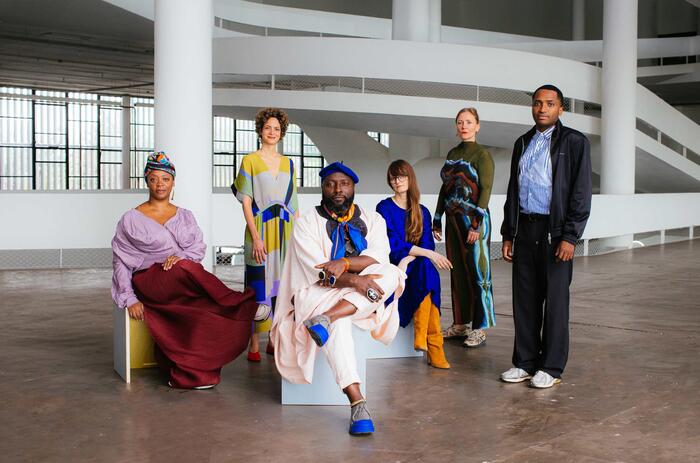
Under the general curatorship of Bonaventure by Soh Bejen Ndikung, the 36th São Paulo Biennial announces its title, curatorial concept, collaborators and visual identity, in addition to informing about an important change in its exhibition period. The title will be: Nem todo viandante anda estradas / Da humanidade como prática [Not All Travelers Walk Roads / Of Humanity as Practice].
THEME AND CURATORIAL CONCEPT FOR THE 36TH SÃO PAULO BIENNIAL ANNOUNCED
Under the general curatorship of Bonaventure by Soh Bejen Ndikung, the 36th São Paulo Biennial announces its title, curatorial concept, collaborators and visual identity, in addition to informing about an important change in its exhibition period. The title will be: Nem todo viandante anda estradas / Da humanidade como prática [Not All Travelers Walk Roads / Of Humanity as Practice].
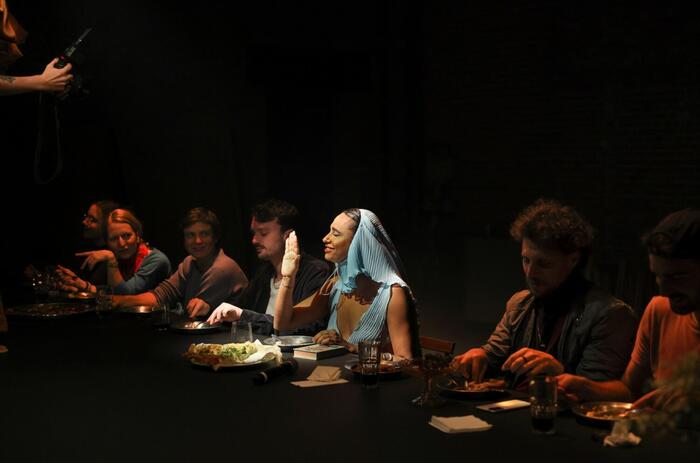
The Museum of Modern Art of São Paulo presents the 38th Panorama of Brazilian Art: Mil Graus [A thousand degrees], an exhibition curated by Germano Dushá and Thiago de Paula Souza, and co-curated by Ariana Nuala, whose title evokes the idea of a “heat-limit,” where everything is transformed, referring to the intense climatic and metaphysical conditions that challenge and lead to inevitable processes of transmutation. In this edition, the MAM biennial exhibition presents 34 artists from 16 Brazilian states.
THE 38TH BRAZILIAN ART PANORAMA: ECOLOGY AND FUTURE
The Museum of Modern Art of São Paulo presents the 38th Panorama of Brazilian Art: Mil Graus [A thousand degrees], an exhibition curated by Germano Dushá and Thiago de Paula Souza, and co-curated by Ariana Nuala, whose title evokes the idea of a “heat-limit,” where everything is transformed, referring to the intense climatic and metaphysical conditions that challenge and lead to inevitable processes of transmutation. In this edition, the MAM biennial exhibition presents 34 artists from 16 Brazilian states.
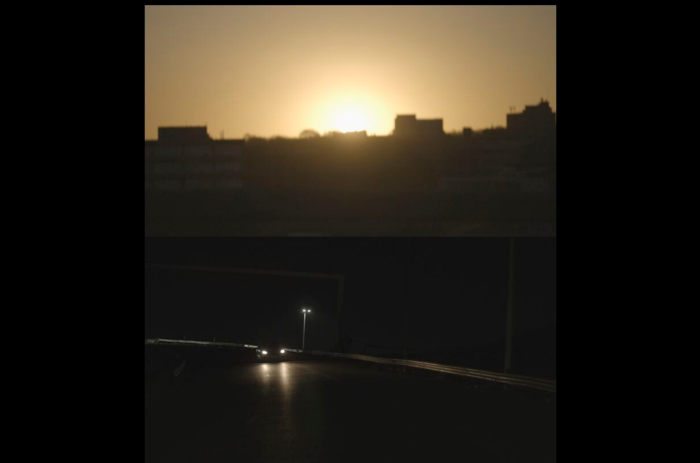
Dim Corners is an evocative exhibition in Johannesburg featuring new works by Brazilian artist Leticia Ramos and South African artist Zen Marie. The exhibition takes into account the city’s frequent energy shortages, and also the recent blackouts that São Paulo had experienced since this project started, weaving a narrative that intertwines the immediate physical impact with the broader, insidious issues of climate change and environmental racism.
LETICIA RAMOS & ZEN MARIE IN A COLLABORATIVE PROJECT
Dim Corners is an evocative exhibition in Johannesburg featuring new works by Brazilian artist Leticia Ramos and South African artist Zen Marie. The exhibition takes into account the city’s frequent energy shortages, and also the recent blackouts that São Paulo had experienced since this project started, weaving a narrative that intertwines the immediate physical impact with the broader, insidious issues of climate change and environmental racism.

ICA Miami presents the first US museum exhibition of the late Afro-Brazilian painter Rubem Valentim (b. 1922, Salvador, Brazil; d. 1991, São Paulo). A singular voice in modernist painting and geometric abstraction, Valentim explored the medium’s formal concerns and social resonances across cultures and spiritual practices. This exhibition focuses on works Valentim produced in the 1960s, and the transformation of his work and thinking during this time.
RUBEM VALENTIM AT ICA MIAMI: THINKING AND TRANSFORMATION
ICA Miami presents the first US museum exhibition of the late Afro-Brazilian painter Rubem Valentim (b. 1922, Salvador, Brazil; d. 1991, São Paulo). A singular voice in modernist painting and geometric abstraction, Valentim explored the medium’s formal concerns and social resonances across cultures and spiritual practices. This exhibition focuses on works Valentim produced in the 1960s, and the transformation of his work and thinking during this time.

Isabella Despujols (Barquisemeto, Venezuela, 1994), Venezuelan artist based in Brazil, uses her artistic references for the realization of her latest series of works, a set made this year where textiles and embroidery are especially relevant, as well as the formal fact that they reflect. In them is palpable the conversation that he intends to maintain with those styles and languages that were fundamental in the countries to which he circumscribes his personal experience.
DESPUJOLS' EMBROIDERED GEOMETRY AT LLAMAZARES
Isabella Despujols (Barquisemeto, Venezuela, 1994), Venezuelan artist based in Brazil, uses her artistic references for the realization of her latest series of works, a set made this year where textiles and embroidery are especially relevant, as well as the formal fact that they reflect. In them is palpable the conversation that he intends to maintain with those styles and languages that were fundamental in the countries to which he circumscribes his personal experience.

The Brazilian gallery Vermelho inaugurated Elemental Change, Ximena Garrido-Lecca's first solo exhibition in the space.
XIMENA GARRIDO-LECCA AT VERMELHO - A NEW VISION OF THE SYSTEM

The approach and review of the work that the multidisciplinary Portuguese-Brazilian artist Fernando Lemos (Lisbon, Portugal, 1926 - São Paulo, Brazil, 2019) made in the framework of his relationship with Japan is the reason for the exhibitions that two centers of the Calouste Gulbenkian Foundation dedicate to his figure. It is worth remembering here that both of them transit in the Japanese concept that stands as the central axis of the new headquarters of the Centro de Arte Moderno, recently inaugurated, and on which the dialogue between both curatorial proposals pivots.
FERNANDO LEMOS AND JAPAN REVIEWED AT GULBENKIAN
The approach and review of the work that the multidisciplinary Portuguese-Brazilian artist Fernando Lemos (Lisbon, Portugal, 1926 - São Paulo, Brazil, 2019) made in the framework of his relationship with Japan is the reason for the exhibitions that two centers of the Calouste Gulbenkian Foundation dedicate to his figure. It is worth remembering here that both of them transit in the Japanese concept that stands as the central axis of the new headquarters of the Centro de Arte Moderno, recently inaugurated, and on which the dialogue between both curatorial proposals pivots.

Under the general curatorship of Bonaventure by Soh Bejen Ndikung, the 36th São Paulo Biennial announces its title, curatorial concept, collaborators and visual identity, in addition to informing about an important change in its exhibition period. The title will be: Nem todo viandante anda estradas / Da humanidade como prática [Not All Travelers Walk Roads / Of Humanity as Practice].
THEME AND CURATORIAL CONCEPT FOR THE 36TH SÃO PAULO BIENNIAL ANNOUNCED
Under the general curatorship of Bonaventure by Soh Bejen Ndikung, the 36th São Paulo Biennial announces its title, curatorial concept, collaborators and visual identity, in addition to informing about an important change in its exhibition period. The title will be: Nem todo viandante anda estradas / Da humanidade como prática [Not All Travelers Walk Roads / Of Humanity as Practice].

The Museum of Modern Art of São Paulo presents the 38th Panorama of Brazilian Art: Mil Graus [A thousand degrees], an exhibition curated by Germano Dushá and Thiago de Paula Souza, and co-curated by Ariana Nuala, whose title evokes the idea of a “heat-limit,” where everything is transformed, referring to the intense climatic and metaphysical conditions that challenge and lead to inevitable processes of transmutation. In this edition, the MAM biennial exhibition presents 34 artists from 16 Brazilian states.
THE 38TH BRAZILIAN ART PANORAMA: ECOLOGY AND FUTURE
The Museum of Modern Art of São Paulo presents the 38th Panorama of Brazilian Art: Mil Graus [A thousand degrees], an exhibition curated by Germano Dushá and Thiago de Paula Souza, and co-curated by Ariana Nuala, whose title evokes the idea of a “heat-limit,” where everything is transformed, referring to the intense climatic and metaphysical conditions that challenge and lead to inevitable processes of transmutation. In this edition, the MAM biennial exhibition presents 34 artists from 16 Brazilian states.

Dim Corners is an evocative exhibition in Johannesburg featuring new works by Brazilian artist Leticia Ramos and South African artist Zen Marie. The exhibition takes into account the city’s frequent energy shortages, and also the recent blackouts that São Paulo had experienced since this project started, weaving a narrative that intertwines the immediate physical impact with the broader, insidious issues of climate change and environmental racism.
LETICIA RAMOS & ZEN MARIE IN A COLLABORATIVE PROJECT
Dim Corners is an evocative exhibition in Johannesburg featuring new works by Brazilian artist Leticia Ramos and South African artist Zen Marie. The exhibition takes into account the city’s frequent energy shortages, and also the recent blackouts that São Paulo had experienced since this project started, weaving a narrative that intertwines the immediate physical impact with the broader, insidious issues of climate change and environmental racism.

ICA Miami presents the first US museum exhibition of the late Afro-Brazilian painter Rubem Valentim (b. 1922, Salvador, Brazil; d. 1991, São Paulo). A singular voice in modernist painting and geometric abstraction, Valentim explored the medium’s formal concerns and social resonances across cultures and spiritual practices. This exhibition focuses on works Valentim produced in the 1960s, and the transformation of his work and thinking during this time.
RUBEM VALENTIM AT ICA MIAMI: THINKING AND TRANSFORMATION
ICA Miami presents the first US museum exhibition of the late Afro-Brazilian painter Rubem Valentim (b. 1922, Salvador, Brazil; d. 1991, São Paulo). A singular voice in modernist painting and geometric abstraction, Valentim explored the medium’s formal concerns and social resonances across cultures and spiritual practices. This exhibition focuses on works Valentim produced in the 1960s, and the transformation of his work and thinking during this time.

Isabella Despujols (Barquisemeto, Venezuela, 1994), Venezuelan artist based in Brazil, uses her artistic references for the realization of her latest series of works, a set made this year where textiles and embroidery are especially relevant, as well as the formal fact that they reflect. In them is palpable the conversation that he intends to maintain with those styles and languages that were fundamental in the countries to which he circumscribes his personal experience.
DESPUJOLS' EMBROIDERED GEOMETRY AT LLAMAZARES
Isabella Despujols (Barquisemeto, Venezuela, 1994), Venezuelan artist based in Brazil, uses her artistic references for the realization of her latest series of works, a set made this year where textiles and embroidery are especially relevant, as well as the formal fact that they reflect. In them is palpable the conversation that he intends to maintain with those styles and languages that were fundamental in the countries to which he circumscribes his personal experience.

The Brazilian gallery Vermelho inaugurated Elemental Change, Ximena Garrido-Lecca's first solo exhibition in the space.
XIMENA GARRIDO-LECCA AT VERMELHO - A NEW VISION OF THE SYSTEM

The approach and review of the work that the multidisciplinary Portuguese-Brazilian artist Fernando Lemos (Lisbon, Portugal, 1926 - São Paulo, Brazil, 2019) made in the framework of his relationship with Japan is the reason for the exhibitions that two centers of the Calouste Gulbenkian Foundation dedicate to his figure. It is worth remembering here that both of them transit in the Japanese concept that stands as the central axis of the new headquarters of the Centro de Arte Moderno, recently inaugurated, and on which the dialogue between both curatorial proposals pivots.
FERNANDO LEMOS AND JAPAN REVIEWED AT GULBENKIAN
The approach and review of the work that the multidisciplinary Portuguese-Brazilian artist Fernando Lemos (Lisbon, Portugal, 1926 - São Paulo, Brazil, 2019) made in the framework of his relationship with Japan is the reason for the exhibitions that two centers of the Calouste Gulbenkian Foundation dedicate to his figure. It is worth remembering here that both of them transit in the Japanese concept that stands as the central axis of the new headquarters of the Centro de Arte Moderno, recently inaugurated, and on which the dialogue between both curatorial proposals pivots.

Under the general curatorship of Bonaventure by Soh Bejen Ndikung, the 36th São Paulo Biennial announces its title, curatorial concept, collaborators and visual identity, in addition to informing about an important change in its exhibition period. The title will be: Nem todo viandante anda estradas / Da humanidade como prática [Not All Travelers Walk Roads / Of Humanity as Practice].
THEME AND CURATORIAL CONCEPT FOR THE 36TH SÃO PAULO BIENNIAL ANNOUNCED
Under the general curatorship of Bonaventure by Soh Bejen Ndikung, the 36th São Paulo Biennial announces its title, curatorial concept, collaborators and visual identity, in addition to informing about an important change in its exhibition period. The title will be: Nem todo viandante anda estradas / Da humanidade como prática [Not All Travelers Walk Roads / Of Humanity as Practice].

The Museum of Modern Art of São Paulo presents the 38th Panorama of Brazilian Art: Mil Graus [A thousand degrees], an exhibition curated by Germano Dushá and Thiago de Paula Souza, and co-curated by Ariana Nuala, whose title evokes the idea of a “heat-limit,” where everything is transformed, referring to the intense climatic and metaphysical conditions that challenge and lead to inevitable processes of transmutation. In this edition, the MAM biennial exhibition presents 34 artists from 16 Brazilian states.
THE 38TH BRAZILIAN ART PANORAMA: ECOLOGY AND FUTURE
The Museum of Modern Art of São Paulo presents the 38th Panorama of Brazilian Art: Mil Graus [A thousand degrees], an exhibition curated by Germano Dushá and Thiago de Paula Souza, and co-curated by Ariana Nuala, whose title evokes the idea of a “heat-limit,” where everything is transformed, referring to the intense climatic and metaphysical conditions that challenge and lead to inevitable processes of transmutation. In this edition, the MAM biennial exhibition presents 34 artists from 16 Brazilian states.

Dim Corners is an evocative exhibition in Johannesburg featuring new works by Brazilian artist Leticia Ramos and South African artist Zen Marie. The exhibition takes into account the city’s frequent energy shortages, and also the recent blackouts that São Paulo had experienced since this project started, weaving a narrative that intertwines the immediate physical impact with the broader, insidious issues of climate change and environmental racism.
LETICIA RAMOS & ZEN MARIE IN A COLLABORATIVE PROJECT
Dim Corners is an evocative exhibition in Johannesburg featuring new works by Brazilian artist Leticia Ramos and South African artist Zen Marie. The exhibition takes into account the city’s frequent energy shortages, and also the recent blackouts that São Paulo had experienced since this project started, weaving a narrative that intertwines the immediate physical impact with the broader, insidious issues of climate change and environmental racism.

ICA Miami presents the first US museum exhibition of the late Afro-Brazilian painter Rubem Valentim (b. 1922, Salvador, Brazil; d. 1991, São Paulo). A singular voice in modernist painting and geometric abstraction, Valentim explored the medium’s formal concerns and social resonances across cultures and spiritual practices. This exhibition focuses on works Valentim produced in the 1960s, and the transformation of his work and thinking during this time.
RUBEM VALENTIM AT ICA MIAMI: THINKING AND TRANSFORMATION
ICA Miami presents the first US museum exhibition of the late Afro-Brazilian painter Rubem Valentim (b. 1922, Salvador, Brazil; d. 1991, São Paulo). A singular voice in modernist painting and geometric abstraction, Valentim explored the medium’s formal concerns and social resonances across cultures and spiritual practices. This exhibition focuses on works Valentim produced in the 1960s, and the transformation of his work and thinking during this time.

Isabella Despujols (Barquisemeto, Venezuela, 1994), Venezuelan artist based in Brazil, uses her artistic references for the realization of her latest series of works, a set made this year where textiles and embroidery are especially relevant, as well as the formal fact that they reflect. In them is palpable the conversation that he intends to maintain with those styles and languages that were fundamental in the countries to which he circumscribes his personal experience.
DESPUJOLS' EMBROIDERED GEOMETRY AT LLAMAZARES
Isabella Despujols (Barquisemeto, Venezuela, 1994), Venezuelan artist based in Brazil, uses her artistic references for the realization of her latest series of works, a set made this year where textiles and embroidery are especially relevant, as well as the formal fact that they reflect. In them is palpable the conversation that he intends to maintain with those styles and languages that were fundamental in the countries to which he circumscribes his personal experience.

The Brazilian gallery Vermelho inaugurated Elemental Change, Ximena Garrido-Lecca's first solo exhibition in the space.
XIMENA GARRIDO-LECCA AT VERMELHO - A NEW VISION OF THE SYSTEM

The approach and review of the work that the multidisciplinary Portuguese-Brazilian artist Fernando Lemos (Lisbon, Portugal, 1926 - São Paulo, Brazil, 2019) made in the framework of his relationship with Japan is the reason for the exhibitions that two centers of the Calouste Gulbenkian Foundation dedicate to his figure. It is worth remembering here that both of them transit in the Japanese concept that stands as the central axis of the new headquarters of the Centro de Arte Moderno, recently inaugurated, and on which the dialogue between both curatorial proposals pivots.
FERNANDO LEMOS AND JAPAN REVIEWED AT GULBENKIAN
The approach and review of the work that the multidisciplinary Portuguese-Brazilian artist Fernando Lemos (Lisbon, Portugal, 1926 - São Paulo, Brazil, 2019) made in the framework of his relationship with Japan is the reason for the exhibitions that two centers of the Calouste Gulbenkian Foundation dedicate to his figure. It is worth remembering here that both of them transit in the Japanese concept that stands as the central axis of the new headquarters of the Centro de Arte Moderno, recently inaugurated, and on which the dialogue between both curatorial proposals pivots.

Under the general curatorship of Bonaventure by Soh Bejen Ndikung, the 36th São Paulo Biennial announces its title, curatorial concept, collaborators and visual identity, in addition to informing about an important change in its exhibition period. The title will be: Nem todo viandante anda estradas / Da humanidade como prática [Not All Travelers Walk Roads / Of Humanity as Practice].
THEME AND CURATORIAL CONCEPT FOR THE 36TH SÃO PAULO BIENNIAL ANNOUNCED
Under the general curatorship of Bonaventure by Soh Bejen Ndikung, the 36th São Paulo Biennial announces its title, curatorial concept, collaborators and visual identity, in addition to informing about an important change in its exhibition period. The title will be: Nem todo viandante anda estradas / Da humanidade como prática [Not All Travelers Walk Roads / Of Humanity as Practice].

The Museum of Modern Art of São Paulo presents the 38th Panorama of Brazilian Art: Mil Graus [A thousand degrees], an exhibition curated by Germano Dushá and Thiago de Paula Souza, and co-curated by Ariana Nuala, whose title evokes the idea of a “heat-limit,” where everything is transformed, referring to the intense climatic and metaphysical conditions that challenge and lead to inevitable processes of transmutation. In this edition, the MAM biennial exhibition presents 34 artists from 16 Brazilian states.
THE 38TH BRAZILIAN ART PANORAMA: ECOLOGY AND FUTURE
The Museum of Modern Art of São Paulo presents the 38th Panorama of Brazilian Art: Mil Graus [A thousand degrees], an exhibition curated by Germano Dushá and Thiago de Paula Souza, and co-curated by Ariana Nuala, whose title evokes the idea of a “heat-limit,” where everything is transformed, referring to the intense climatic and metaphysical conditions that challenge and lead to inevitable processes of transmutation. In this edition, the MAM biennial exhibition presents 34 artists from 16 Brazilian states.

Dim Corners is an evocative exhibition in Johannesburg featuring new works by Brazilian artist Leticia Ramos and South African artist Zen Marie. The exhibition takes into account the city’s frequent energy shortages, and also the recent blackouts that São Paulo had experienced since this project started, weaving a narrative that intertwines the immediate physical impact with the broader, insidious issues of climate change and environmental racism.
LETICIA RAMOS & ZEN MARIE IN A COLLABORATIVE PROJECT
Dim Corners is an evocative exhibition in Johannesburg featuring new works by Brazilian artist Leticia Ramos and South African artist Zen Marie. The exhibition takes into account the city’s frequent energy shortages, and also the recent blackouts that São Paulo had experienced since this project started, weaving a narrative that intertwines the immediate physical impact with the broader, insidious issues of climate change and environmental racism.

ICA Miami presents the first US museum exhibition of the late Afro-Brazilian painter Rubem Valentim (b. 1922, Salvador, Brazil; d. 1991, São Paulo). A singular voice in modernist painting and geometric abstraction, Valentim explored the medium’s formal concerns and social resonances across cultures and spiritual practices. This exhibition focuses on works Valentim produced in the 1960s, and the transformation of his work and thinking during this time.
RUBEM VALENTIM AT ICA MIAMI: THINKING AND TRANSFORMATION
ICA Miami presents the first US museum exhibition of the late Afro-Brazilian painter Rubem Valentim (b. 1922, Salvador, Brazil; d. 1991, São Paulo). A singular voice in modernist painting and geometric abstraction, Valentim explored the medium’s formal concerns and social resonances across cultures and spiritual practices. This exhibition focuses on works Valentim produced in the 1960s, and the transformation of his work and thinking during this time.

Isabella Despujols (Barquisemeto, Venezuela, 1994), Venezuelan artist based in Brazil, uses her artistic references for the realization of her latest series of works, a set made this year where textiles and embroidery are especially relevant, as well as the formal fact that they reflect. In them is palpable the conversation that he intends to maintain with those styles and languages that were fundamental in the countries to which he circumscribes his personal experience.
DESPUJOLS' EMBROIDERED GEOMETRY AT LLAMAZARES
Isabella Despujols (Barquisemeto, Venezuela, 1994), Venezuelan artist based in Brazil, uses her artistic references for the realization of her latest series of works, a set made this year where textiles and embroidery are especially relevant, as well as the formal fact that they reflect. In them is palpable the conversation that he intends to maintain with those styles and languages that were fundamental in the countries to which he circumscribes his personal experience.

The Brazilian gallery Vermelho inaugurated Elemental Change, Ximena Garrido-Lecca's first solo exhibition in the space.
XIMENA GARRIDO-LECCA AT VERMELHO - A NEW VISION OF THE SYSTEM

The approach and review of the work that the multidisciplinary Portuguese-Brazilian artist Fernando Lemos (Lisbon, Portugal, 1926 - São Paulo, Brazil, 2019) made in the framework of his relationship with Japan is the reason for the exhibitions that two centers of the Calouste Gulbenkian Foundation dedicate to his figure. It is worth remembering here that both of them transit in the Japanese concept that stands as the central axis of the new headquarters of the Centro de Arte Moderno, recently inaugurated, and on which the dialogue between both curatorial proposals pivots.
FERNANDO LEMOS AND JAPAN REVIEWED AT GULBENKIAN
The approach and review of the work that the multidisciplinary Portuguese-Brazilian artist Fernando Lemos (Lisbon, Portugal, 1926 - São Paulo, Brazil, 2019) made in the framework of his relationship with Japan is the reason for the exhibitions that two centers of the Calouste Gulbenkian Foundation dedicate to his figure. It is worth remembering here that both of them transit in the Japanese concept that stands as the central axis of the new headquarters of the Centro de Arte Moderno, recently inaugurated, and on which the dialogue between both curatorial proposals pivots.

Under the general curatorship of Bonaventure by Soh Bejen Ndikung, the 36th São Paulo Biennial announces its title, curatorial concept, collaborators and visual identity, in addition to informing about an important change in its exhibition period. The title will be: Nem todo viandante anda estradas / Da humanidade como prática [Not All Travelers Walk Roads / Of Humanity as Practice].
THEME AND CURATORIAL CONCEPT FOR THE 36TH SÃO PAULO BIENNIAL ANNOUNCED
Under the general curatorship of Bonaventure by Soh Bejen Ndikung, the 36th São Paulo Biennial announces its title, curatorial concept, collaborators and visual identity, in addition to informing about an important change in its exhibition period. The title will be: Nem todo viandante anda estradas / Da humanidade como prática [Not All Travelers Walk Roads / Of Humanity as Practice].

The Museum of Modern Art of São Paulo presents the 38th Panorama of Brazilian Art: Mil Graus [A thousand degrees], an exhibition curated by Germano Dushá and Thiago de Paula Souza, and co-curated by Ariana Nuala, whose title evokes the idea of a “heat-limit,” where everything is transformed, referring to the intense climatic and metaphysical conditions that challenge and lead to inevitable processes of transmutation. In this edition, the MAM biennial exhibition presents 34 artists from 16 Brazilian states.
THE 38TH BRAZILIAN ART PANORAMA: ECOLOGY AND FUTURE
The Museum of Modern Art of São Paulo presents the 38th Panorama of Brazilian Art: Mil Graus [A thousand degrees], an exhibition curated by Germano Dushá and Thiago de Paula Souza, and co-curated by Ariana Nuala, whose title evokes the idea of a “heat-limit,” where everything is transformed, referring to the intense climatic and metaphysical conditions that challenge and lead to inevitable processes of transmutation. In this edition, the MAM biennial exhibition presents 34 artists from 16 Brazilian states.

Dim Corners is an evocative exhibition in Johannesburg featuring new works by Brazilian artist Leticia Ramos and South African artist Zen Marie. The exhibition takes into account the city’s frequent energy shortages, and also the recent blackouts that São Paulo had experienced since this project started, weaving a narrative that intertwines the immediate physical impact with the broader, insidious issues of climate change and environmental racism.
LETICIA RAMOS & ZEN MARIE IN A COLLABORATIVE PROJECT
Dim Corners is an evocative exhibition in Johannesburg featuring new works by Brazilian artist Leticia Ramos and South African artist Zen Marie. The exhibition takes into account the city’s frequent energy shortages, and also the recent blackouts that São Paulo had experienced since this project started, weaving a narrative that intertwines the immediate physical impact with the broader, insidious issues of climate change and environmental racism.

